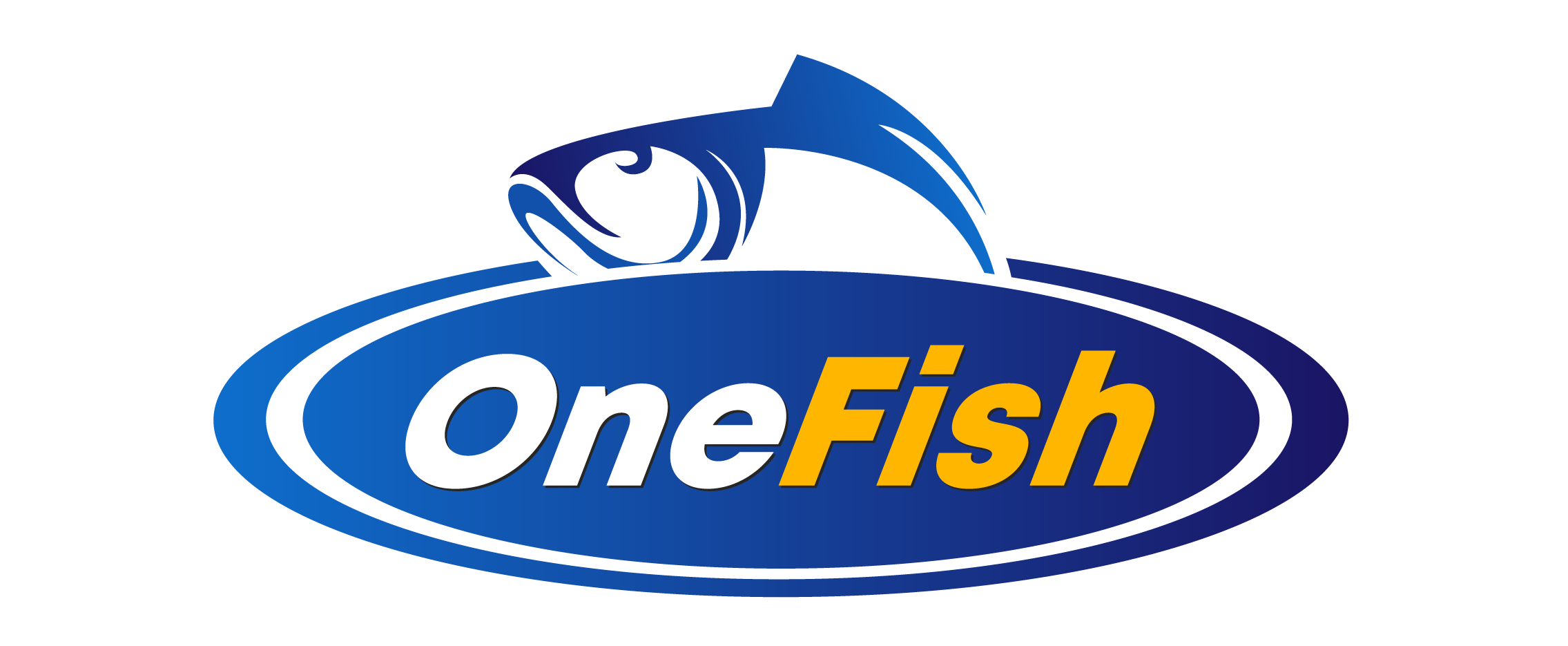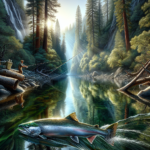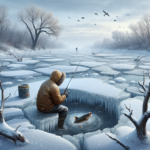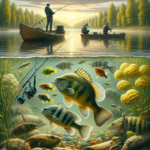Summer Tarpon Fishing in the Florida Keys
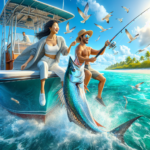
Introduction
Imagine the thrill of battling a 100-pound silver king as it leaps out of the water, its scales glistening in the summer sun. Welcome to summer tarpon fishing in the Florida Keys, a bucket-list experience for anglers worldwide. This article will guide you through the essentials of targeting tarpon in this iconic location, covering everything from the best fishing techniques and gear to top fishing spots and seasonal considerations.
Why does this matter? For many anglers, catching a tarpon is a rite of passage. Known for their acrobatic fights and sheer size, tarpon are one of the most sought-after game fish. Whether you’re a seasoned angler or a novice, understanding the nuances of tarpon fishing in the Florida Keys can significantly enhance your chances of success and ensure a memorable experience.
Background/Context
Historical or Cultural Significance
Tarpon fishing in the Florida Keys has a rich history dating back to the early 20th century. The region became a hotspot for sport fishing after the construction of the Overseas Highway, which made the Keys more accessible. Over the years, the Florida Keys have hosted numerous fishing tournaments, attracting anglers from around the globe. The cultural significance of tarpon fishing is deeply embedded in the local community, contributing to both the economy and the region’s identity.
Geographical Overview
The Florida Keys are a coral cay archipelago located off the southern coast of Florida. The region boasts a tropical climate, with warm temperatures year-round and a distinct wet season from May to October. The local ecosystem is incredibly diverse, featuring mangroves, seagrass beds, and coral reefs, all of which provide ideal habitats for tarpon and other marine species.
Key Points/Details
Fishing Techniques
Technique Overview
Several techniques are effective for tarpon fishing in the Florida Keys, including fly fishing, live bait fishing, and artificial lure fishing. Fly fishing is particularly popular, requiring skill and precision to present the fly in a way that entices the tarpon. Live bait fishing often involves using mullet, crabs, or pinfish, while artificial lures like soft plastics and topwater plugs can also be effective.
When and Where to Use
The best time for tarpon fishing in the Florida Keys is from late spring to early summer, typically April through June. During this period, tarpon migrate through the area in large numbers. Prime locations include the bridges connecting the Keys, such as the Seven Mile Bridge, as well as backcountry waters and channels.
Recommended Gear
- Rods: A 10-12 weight fly rod for fly fishing or a heavy-action spinning rod for live bait and lures.
- Reels: High-quality reels with a strong drag system, capable of holding at least 200 yards of line.
- Lines: Floating lines for fly fishing and 30-50 lb braided lines for spinning setups.
- Bait/Lures: Live mullet, crabs, pinfish, soft plastics, and topwater plugs.
Species Information
Species Overview
Tarpon (Megalops atlanticus) are large, powerful fish known for their acrobatic leaps and strong runs. They are typically found in warm, shallow waters and are most active during the early morning and late afternoon. Tarpon are migratory, moving between coastal waters and estuaries depending on the season.
Best Practices
To successfully catch tarpon, it’s essential to use the right techniques and gear. When fly fishing, focus on accurate casting and smooth presentations. For live bait fishing, ensure your bait is lively and well-presented. Patience is key, as tarpon can be finicky eaters. Always use a strong leader to prevent break-offs and practice catch-and-release to preserve the population.
Location Information
Top Fishing Spots
- Seven Mile Bridge: Known for its strong currents and abundant tarpon, this is a prime spot for both fly and bait fishing.
- Long Key Bridge: Another excellent location, offering easy access and a high concentration of tarpon during the migration season.
- Backcountry Waters: The shallow flats and channels in the backcountry provide ideal conditions for sight fishing.
Regulations and Licenses
Anglers must adhere to local fishing regulations, which include obtaining a Florida saltwater fishing license. Additionally, a tarpon tag is required if you intend to harvest a tarpon, although catch-and-release is strongly encouraged. Be aware of size and bag limits, and always check for any seasonal restrictions.
Seasonal Considerations
Seasonal Variations
Fishing conditions in the Florida Keys can vary significantly throughout the year. During the peak tarpon season (April to June), water temperatures are ideal, and tarpon are abundant. In the off-season, tarpon can still be found, but they are less concentrated, and fishing may require more effort and local knowledge.
Best Times to Fish
The optimal times for tarpon fishing are early morning and late afternoon when the fish are most active. Tidal movements also play a crucial role; fishing during incoming or outgoing tides can increase your chances of success.
Events and Tournaments
Event Overview
The Florida Keys host several prestigious tarpon fishing tournaments, such as the Golden Fly Invitational Tarpon Tournament and the Marathon International Tarpon Tournament. These events attract top anglers and offer significant prizes.
Preparation Tips
To prepare for a tournament, practice your casting and presentation techniques, ensure your gear is in top condition, and familiarize yourself with the tournament rules and regulations. Pre-fishing the area can also give you a competitive edge.
Tips and Best Practices
General Tips
- Always be patient and persistent; tarpon fishing can be challenging but rewarding.
- Pay attention to the tides and weather conditions, as these can significantly impact your success.
- Use high-quality gear to handle the strength and size of tarpon.
Avoid Common Mistakes
- Overcasting: Avoid casting too far, as tarpon are often closer than you think.
- Improper Gear: Using inadequate gear can lead to break-offs and lost fish.
- Ignoring Tides: Failing to consider tidal movements can reduce your chances of success.
Advanced Techniques
- Double Haul Casting: Mastering this fly fishing technique can improve your casting distance and accuracy.
- Live Bait Rigging: Learn advanced rigging techniques to present live bait more effectively.
- Sight Fishing: Develop your skills in spotting and targeting tarpon in shallow waters.
Gear and Equipment Recommendations
Essential Gear
- 10-12 weight fly rod or heavy-action spinning rod
- High-quality reel with a strong drag system
- 30-50 lb braided line
- Live bait (mullet, crabs, pinfish) or artificial lures (soft plastics, topwater plugs)
Optional Gear/Upgrades
- Polarized sunglasses for better visibility
- Fishing gloves to protect your hands
- Waterproof camera to capture your catch
Where to Buy or Rent
Local shops in the Florida Keys, such as Angler’s Pro Shop and Marathon Bait & Tackle, offer a wide range of fishing gear. Online stores like Bass Pro Shops and TackleDirect also provide extensive selections. Some local shops offer rental options for those who prefer not to bring their own gear.
Safety and Conservation
Safety Tips
- Always check the weather forecast before heading out.
- Wear a life jacket when fishing from a boat.
- Be cautious of wildlife, including sharks and alligators.
Conservation Practices
- Practice catch-and-release to preserve tarpon populations.
- Use circle hooks to reduce injury to the fish.
- Respect local wildlife and habitats by minimizing your environmental impact.
Planning Your Trip
Accommodations
The Florida Keys offer a range of accommodations, from luxury resorts like Cheeca Lodge & Spa to budget-friendly options like the Key West Youth Hostel. Many fishing lodges also provide packages that include guided fishing trips.
Travel Tips
The Florida Keys are accessible via the Overseas Highway (U.S. Route 1). The nearest major airport is Miami International Airport, with car rentals available for the drive to the Keys. Alternatively, Key West International Airport offers direct flights from several U.S. cities.
Additional Activities
When not fishing, explore other activities such as snorkeling, diving, and visiting local attractions like the Ernest Hemingway Home and Museum in Key West. The Keys also offer excellent dining options, featuring fresh seafood and local cuisine.
Frequently Asked Questions (FAQs)
What is the best time of year for tarpon fishing in the Florida Keys?
The best time for tarpon fishing is from April to June, during the peak migration season.
Do I need a special license to fish for tarpon?
Yes, you need a Florida saltwater fishing license and a tarpon tag if you intend to harvest a tarpon. Catch-and-release is strongly encouraged.
What gear do I need for tarpon fishing?
Essential gear includes a 10-12 weight fly rod or heavy-action spinning rod, a high-quality reel with a strong drag system, 30-50 lb braided line, and live bait or artificial lures.
Are there any local fishing tournaments I can participate in?
Yes, the Florida Keys host several tarpon fishing tournaments, such as the Golden Fly Invitational Tarpon Tournament and the Marathon International Tarpon Tournament.
Conclusion
Summer tarpon fishing in the Florida Keys offers an unparalleled angling experience, combining the thrill of catching one of the most sought-after game fish with the beauty of a tropical paradise. By understanding the best techniques, gear, and locations, you can maximize your chances of success and create lasting memories. Whether you’re a seasoned angler or a novice, the Florida Keys provide the perfect backdrop for an unforgettable fishing adventure.
So, pack your gear, plan your trip, and get ready to chase the silver king in one of the world’s premier fishing destinations. Tight lines!
